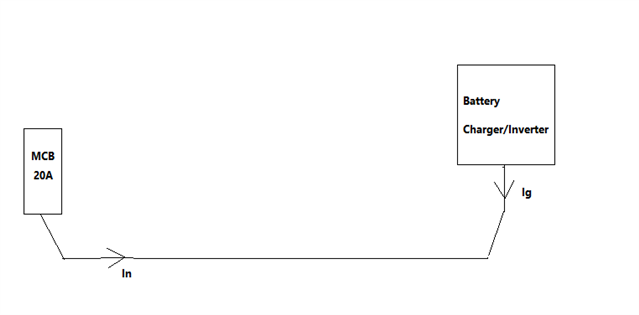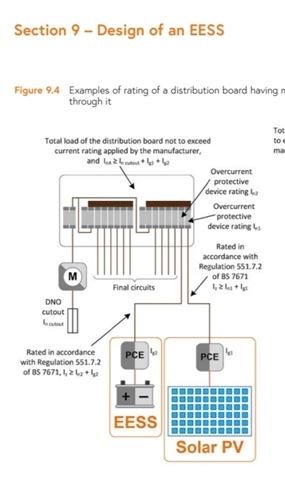Having read the COP on Electrical Energy Storage Systems and completed the IET course on the same subject I had a query regarding the rating of domestic consumer units and switch gear which I addressed by email to NICEIC technical. I also came across an older discussion on this forum but am still no closer to a definitive answer. I've included my findings and would welcome constructive input.
Post by GKenyon in previous thread
Because an EESS charges the battery as well as as discharging it, you will need to check the rating of the CU is not exceeded. For example, if the CU is rated for 100 A, and there's a 100 A service fuse, and a 16 A output battery storage system - by feeding 16 A in at one end through an OCPD, because that OCPD gets hot it contributes to the total heat load in the CU - therefore the CU should be rated for 116 A.
My question to NICEIC.
551.7.2 Where the generating set is connected to either the main consumer unit or via a separate consumer unit via Henley blocks the rating of the consumer units shall be protected by a OCPD InA≥In+Ig(s).
The Certsure Technical Helpline provides general information and guidance for compliance with the British Standard BS 7671, the Requirements for Electrical Installations, and matters concerning electrical safety within electrical installations designed, constructed, inspected, and tested to BS 7671. Without detailed knowledge of your installation, we cannot offer advice specific to your installation and can only generically provide comments based on the information you have provided.
The intent of the regulation is to ensure that the assembly is not overloaded with the additional generating set, as the main fuse may not protect the assembly if for example the internal busbar is pulling 116A.
Regulation 536.4.202 states: see regulation
From the viewpoint of an EICR, we would be looking for evidence that the assembly is being overloaded, such as burning, distorting and the likes.
The above regulation allows for diversity to be taken into account, so we can exercise our engineering judgement in declaring whether or not the assembly is suitably protected.
We trust that we have answered your current question; however if you require any further information or clarification, then please do not hesitate to contact us either by e-mail to helpline@certsure.com or by telephone on 0333 015 6628
I've read 536.4.202 and am interested on your views on the last paragraph with the shall requirement and how this ties in with the answer given by certsure. 536.4.3.2 is also relevant but has not been mentioned in the reply.
Thanks for your time.




